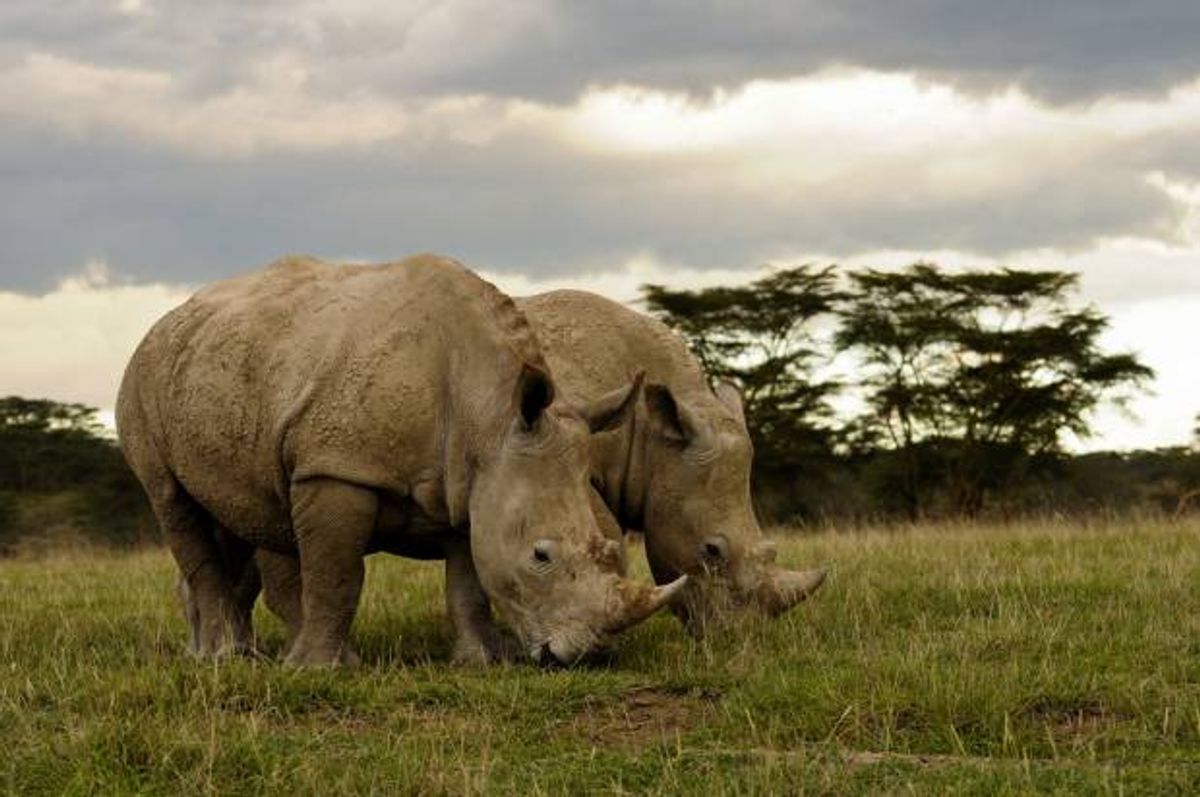For nearly 40 years, researchers have been taking samples of every animal to die at the San Diego Zoo and storing it in something called the Frozen Zoo-- a genetic bank filled with the DNA of over 1,000 species and subspecies.
The Associated Press' Julie Watson reports that the zoo's contents have already been used semi-successfully:
Sperm from the Frozen Zoo has been used in artificial insemination to reproduce endangered animals from the giant panda to the Chinese monal pheasant. Its frozen cells also were used to clone two endangered types of cattle. The gaur lived only a few days while the banteng survived for seven years before being put down after breaking a leg. Both animals, however, had genetic defects.
But researchers are particularly hopeful about the zoo's potential to help the nearly extinct northern white rhino. Only five animals are left on Earth-- one of them, Nola, lives at the San Diego Zoo Safari Park. Her male counterpart, Angalifu, died just weeks ago. Scientists already harvested Angalifu's sperm, and will do the same for Nola's eggs when she dies. They will save these components for a day when it is possible to use in-vitro fertilization to grow a rhino outside its mother.
"It's sort of a Hail Mary pass," said Jeanne Loring, director of the Center for Regenerative Medicine at Scripps Research Institute. "It's definitely not going to be easy, but it's possible. This is not science fiction."
Others are skeptical. "The frozen zoo is basically re-arranging the deck chairs on the Titanic," said Paul Ehrlich, a senior fellow at the Stanford Woods Institute for the Environment in an interview with the Associated Press. "Screwing around with science to save a white rhino might be fun and I would like to see it preserved and am all for biodiversity, but it's so far down the list of things we should be doing first."



Shares